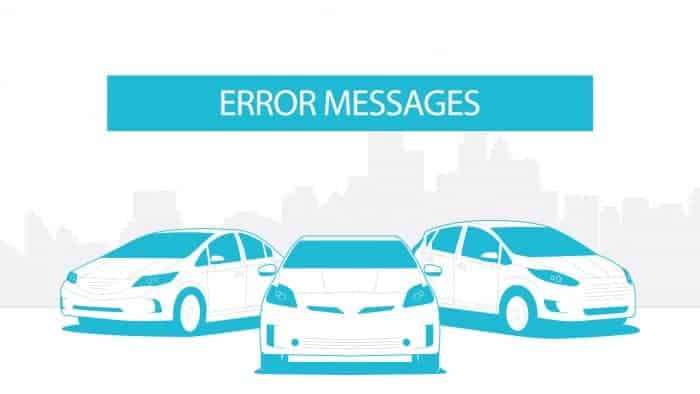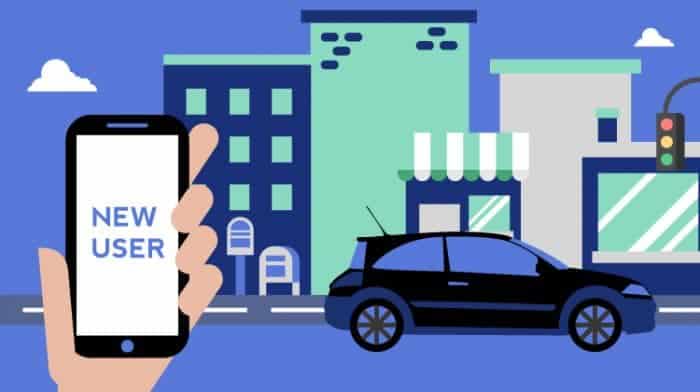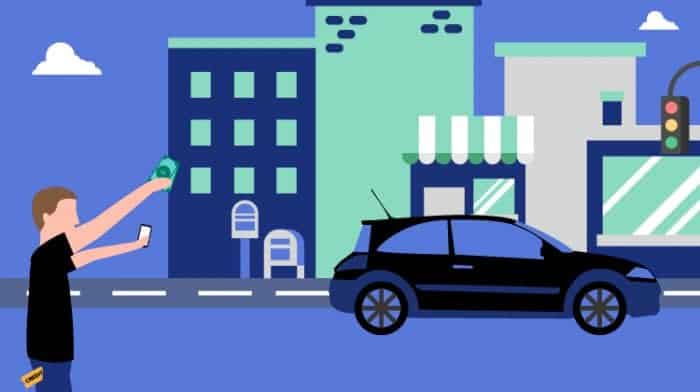Harry here. Today, Senior RSG contributor John Ince takes a look at a new strategy for Uber in India that could be coming to the US, Instacart's issues with its workers, Uber's new drone marketing tactic and more.
No more burning cash: Ola, Uber raise fares, cut driver incentives [First Post]
Sum and Substance: The consumer internet-based companies' mantra of burning loads of investors' cash to offer discounts to customers may be coming to an end, at least in the taxi aggregation segment. Even as India's e-commerce companies such as Amazon, Flipkart, Snapdeal and others continue to offer hefty discounts through their sellers to gain market share, their counterparts in the country's growing transportation segment seem to be slowly moving towards economies of scale.
Both, the home-grown taxi-hailing app company Ola and the US giant Uber are charting out strategy to boost their revenues and prune costs. The decision is more or less to move away from the earlier stance of offering cheap fares to customers, who usually prefer state-owned buses, local taxis and three-wheelers for transportation purpose.
In a series of steps focussed on improving the revenue metrics, Ola and Uber have started raising fares in several cities, says a report in The Economic Times. Besides this, the companies are also slashing the incentives paid to drivers and stepping up vigilance to curb fraud by drivers, the ET report said. A day before, an Ola executive admitted that predatory pricing is detrimental to the industry, and would react to competition in a way to ensure there is no monopoly in the Indian market.
“In its totality, predatory pricing is detrimental to the industry. In the long run, this will not benefit anyone and it never has in the past. Being an aggregator, we have to react to competition. We live in a competitive market,” Ola Chief Operating Officer Pranay Jivrajka has been quoted as saying in the report. Among the steps taken, Ola has cut drivers' incentives in Delhi by as much as 20-40 percent over a year ago period. Citing an example, the company says it now pays Rs 2,400 as incentive to a driver in Delhi as against Rs 3,000 a year ago, the ET report added.
Ola's arch rival Uber last week raised fares in the Delhi-NCR region for distances over 20 km. This is in addition to the prices being increased in Bengaluru and Hyderabad a year back, mainly to incentivize drivers.
My Take: Anybody who has taken a serious look at Uber's financials, knows this move has been coming for some time, starting in India and coming soon to a city near you. I tell my passengers, “If you like Uber now with these fares, enjoy it while it lasts. It ain't going to last forever.” I usually get surprised reactions. Few passengers understand the dynamics of this industry. They don't know Uber is losing boatloads of investor capital, because they're subsidizing fares and offering driver bonuses. They just know their ride is ridiculously cheap – and that's just fine with them … for now.
Instacart Cancels Plans To Scrap Tips Amid Threats Of Strikes [Buzzfeed]
Sum and Substance: Instacart is adjusting planned changes to its pay structure for full-service shoppers, following threats of a boycott by the independent contractors who were outraged over the $2 billion grocery delivery startup's plans to replace tips with an optional 10% service fee collected by the company. “After announcing this change we heard from shoppers that they liked most of the changes but wanted to retain the ability for customers to tip online,” Instacart explained in a Friday blog post. “We understand their concern and have decided to continue to accept tips.”
Instacart's move comes just two days ahead of a threatened October 16/17 strike organized around a “Let's get our tips back” call to action. Instacart had maintained that planned changes to its pay rate for independent contractors - which involved raising their base pay rate and replacing tips with an optional 10% “service amount” paid directly to Instacart - were intended to benefit workers by reducing reliance on tips.
But shoppers who did some back-of-the-envelope math following the company's announcement worried that the changes would reduce their overall income. “I get a lot of big tips. That's what I rely on,” said Matt, a shopper in Chicago who planned to boycott Instacart on Sunday and Monday. “I knew it wasn't going to be in my best interests.” Josh, a shopper on the East Coast, agreed. “Right now on an average week I make about $750, and I've made up to $1100 if I really work hard all week and things aren't slow,” he told BuzzFeed News via email. “So, with the changes I'm looking at making between $500 and $700 for the same amount of work.”
My Take: This development could have longer term implications for Uber – especially if rideshare drivers discover the magic formula that worked here with Instacart. Does anybody know how this threat of a strike was organized? So far Uber has simply ignored all attempts to organize drivers and most all efforts have simply vanished with little or no effect on Uber policy. Did Instacart reverse course here because they're more skittish or more responsive to the clientele? Or was this a serious threat of boycott that Instacart could not ignore? Do you have information on this situation? Share in the comments.
Uber used drones to advertise carpooling to drivers stuck in traffic in Mexico [The Verge]
Sum and Substance: A few months ago, drivers stuck in Mexico City traffic were greeted with a strange sight: drones carrying signs advertising UberPool. “The city would be for you, not 5.5 million cars,” one drone's sign read. “Driving by yourself? This is why you can never see the volcanoes,” another read, a reference to the smog that obscures the mountains surrounding the city.
Photos of the unique drone-based advertising strategy first surfaced in an article published last week in Bloomberg about Uber's growth in Latin America. MIT Technology Review characterized the drones as “heckling” drivers, while Jalopnik said they were being “badgered.” Popular Science fretted over whether we could soon see ad-bearing drones here in the US.
A spokesperson for Uber confirmed that drones were used to advertise its carpooling service in Mexico City, but that the company has no plans to replicate the strategy in other markets. In other words, this was a one-time thing.
Or was it? As PopSci points out, Uber would need to obtain a federal waiver, as well as jump through various other bureaucratic hoops, to get permission to fly its ad-drones over drivers stuck on the 405 in Long Beach, or the BQE in New York City. That said, as long as the ad is “securely attached to the small unmanned aircraft” and is flown over human beings ”inside a stationary vehicle that can provide reasonable protection from a falling small unmanned aircraft,” the Federal Aviation Administration says ad-drones would be okay under federal law.
In some ways, what Uber pulled off in Mexico City could be seen as the future of advertising. It's eye-catching, cheaper than a billboard, and clearly results in a lot of earned media for the brand. Which is another way of saying, I'd like to apologize for whatever role this article may play in our dystopian future where coupon-bearing drones dive-bomb unsuspecting consumers. My bad.
My Take: Is it just me or does this seem pretty bizarre to the rest of you too? Yes, we all know Uber is aggressive. Yes, it's eye catching. Yes, many drivers will see these drones and impressions will be made. But what about safety? What about drivers who are startled by a flying object in front of them? What about the lasting impressions? What will drivers think about this two days or two weeks later? I can't help but think this is just one more of Uber's moves that was not very carefully thought through before the green light was given somewhere up the in Uber corporate offices.
For three hours, Uber let riders pitch their startup to a VC in an UberPool - here's what it was like [Business Insider]
Sum and Substance: Getting in front of some of the most well-known venture capitalists in New York isn't an easy task. But for a few hours on Thursday, Uber gave anyone with an idea the option to hail a VC at the touch of a button.
Called Pool Pitch, the option was available on October 13 from 11 a.m. to 2 p.m. Users could hail a ride with an investor from New York firms like First Round Capital, Lerer Hippeau Ventures, Brooklyn Bridge Capital, and Primary Venture Partners, anywhere in New York's five boroughs. The people with the best ideas received invitations to an event with investors that Thursday night, and three were selected to pitch on stage in front of a panel of VCs. The first-place winner received a $5,000 prize from First Round Capital.
I got to ride along with First Round's Chris Fralic as we picked up entrepreneurs and listened to pitches in Brooklyn's Williamsburg neighborhood. Here's how it went.
Uber had about 30 Uber drivers in SUVs meet at Uber headquarters in Chelsea. I rode along with Chris Fralic, a partner at First Round Capital. Fralic has done Uber Pool Pitch in Philadelphia and said he was excited to see what kind of pitches he was going to get. “You react as they come in and you never really know what you'll get. That's half the fun of it,” Fralic said.
Fralic was actually one of the first people to identify Uber as the next big thing back in 2010. First Round was Uber's first institutional investor, so it's somewhat fitting that Fralic helped organize Uber Pool Pitch in New York. At 11:20, we made our first pick-up. Michael Twersky is the creator of Whyline, an app that helps people avoid waiting in lines at places like hospitals or restaurants. His company has begun to roll out in Argentina and is looking to raise $1 million in funding.
My Take: It has occurred to me on numerous rides, that the time you have together with a passenger could be put to better use. That's why I try to engage passengers in conversation and find out what they do – what makes them tick. On several occasions, I've had wannabe entrepreneurs spin out their entire pitch. Apparently Chris Fralic, of First Round Capital and an early Uber investor, had the same idea. Imagine if you're one of these drivers, what's your pitch? I can't help but wonder if at least one of these New York drivers pitched a Juno lookalike?
Readers, what do you think of this week's roundup?
-John @ RSG
The post Weekly Roundup: No More Burning Cash for Uber appeared first on The Rideshare Guy Blog and Podcast.








